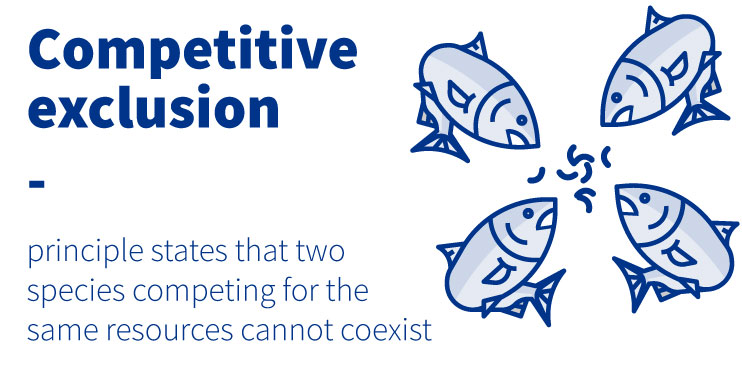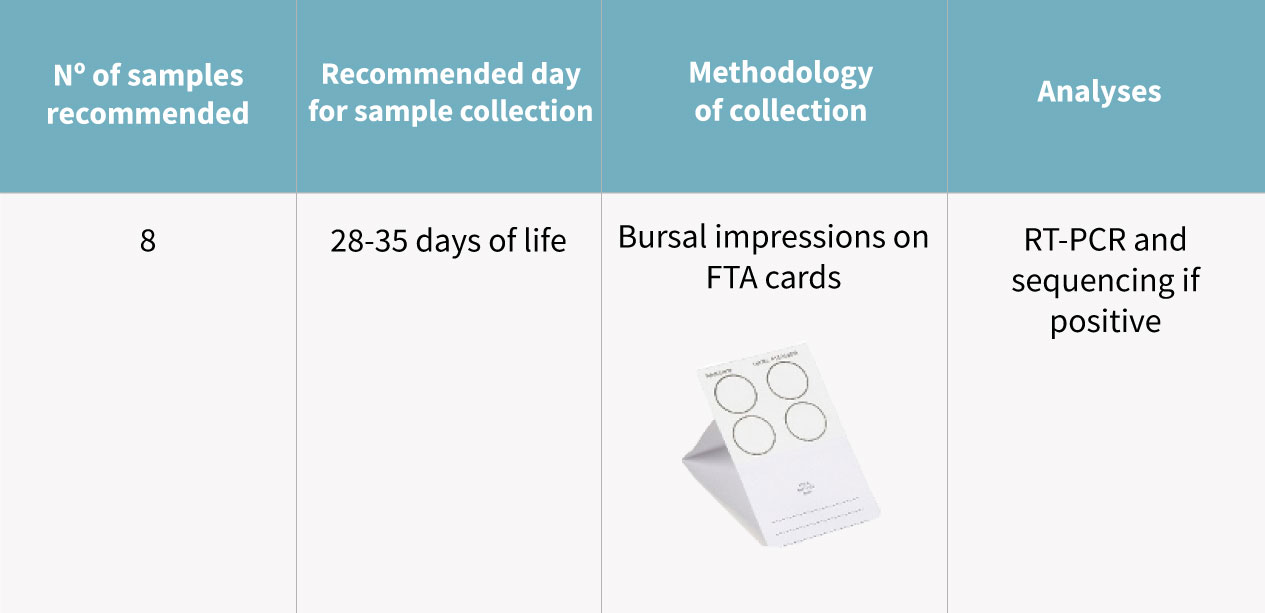Protection against IBD (Infectious Bursal Disease or Gumboro disease) by vaccines is normally evaluated through their capacity to create a good humoral response against the virus (IBDV). However, the protection provided in the case of live vaccines involves a step prior to the creation of specific antibodies against IBDV: The competitive exclusion effect in the bursa of Fabricius. This is not just the first barrier of protection that the live vaccine creates against IBDV, but also, probably, the most powerful one.

What is competitive exclusion in the case of Gumboro disease?
The competitive exclusion principle by Gause (1934) asserts that two species cannot exploit the environment in exactly the same way and coexist – one of the species will be excluded.
This principle is what we observe in the case of Gumboro disease in the competition for the bursa of Fabricius niche between two field IBDV, but also between a vaccine virus and a field virus.
In both cases, the virus that arrives first and replicates better in the bursa will block the multiplication of the other.
Why can competitive exclusion in the bursa of Fabricius be the most powerful protection against IBDV?
Basically, because the replication of the vaccine virus in the bursa of Fabricius will prevent not only the multiplication of the field virus (and the consequent viraemia) but it will also avoid shedding and possible mutations.
Moreover, the competitive exclusion protection does not depend on nucleotide similarities between the vaccine virus and the field strain since it is just a matter of physical occupation of the replication niche.
In fact, this viral competition is so powerful that it also explains why, in countries like United States, the endemic viruses are variant types instead of the vvIBDVs detected all over the world (Jackwood, 2011).
How can we measure the competitive exclusion protection provided by a live IBD vaccine?
The colonization of the bursa of Fabricius by the vaccine strain represents the start of protection of the bird by competitive exclusion and is established in each bird as soon as the first signs of replication of the virus in the bursa of Fabricius are observed.
For an optimal evaluation of the efficacy of vaccination with live vaccines, monitoring of the colonization of the bursa of Fabricius by the vaccine strain over time is recommended.
Molecular diagnosis (PCR + sequencing) is the tool that is normally selected for detection of the vaccine virus in the bursa.

References:
- D. J. Jackwood. 2011. Viral competition and Maternal Immunity influence the clinical disease caused by very virulent infectious bursal disease virus. Avian Disease 55:398-406.
